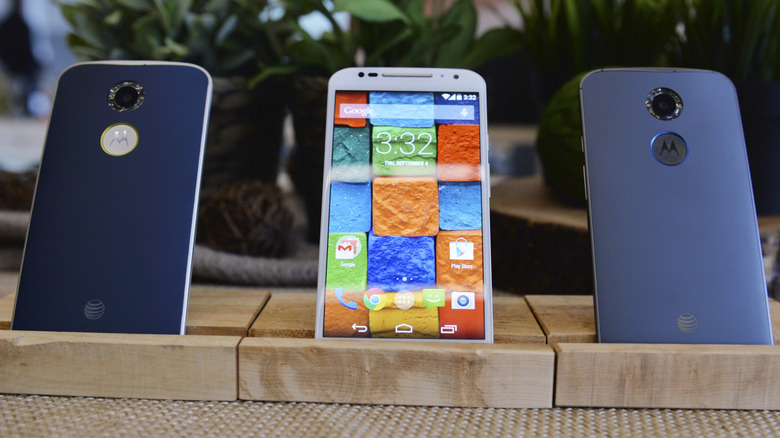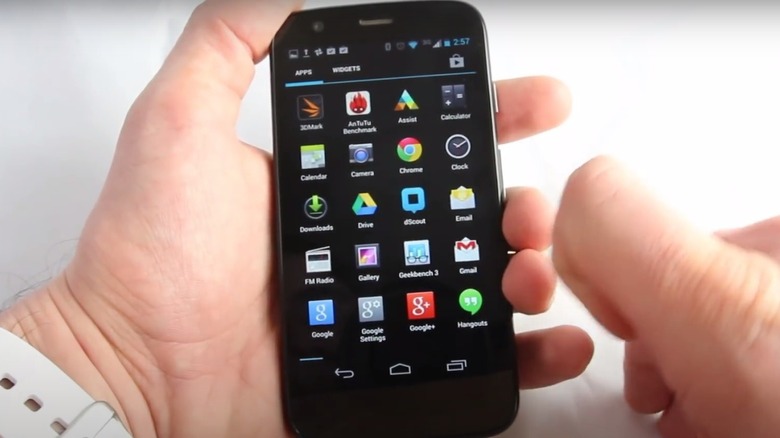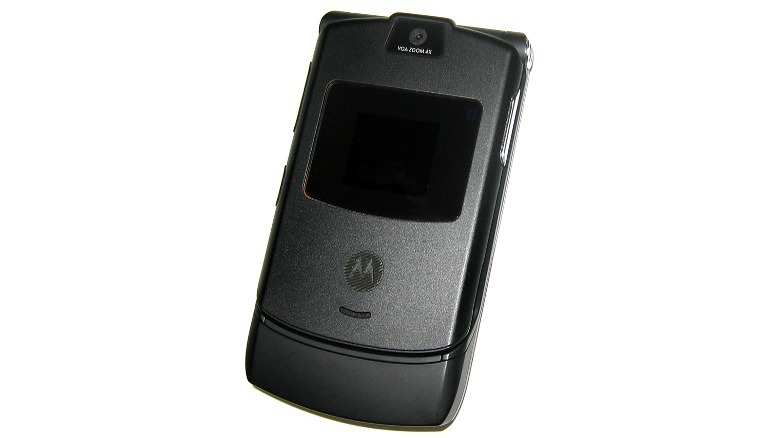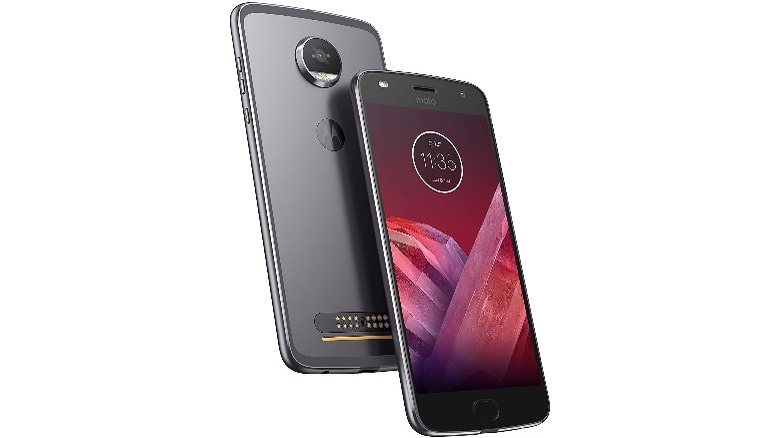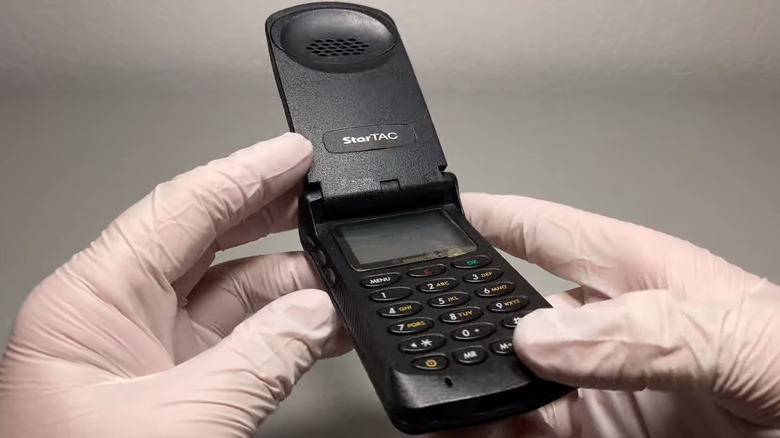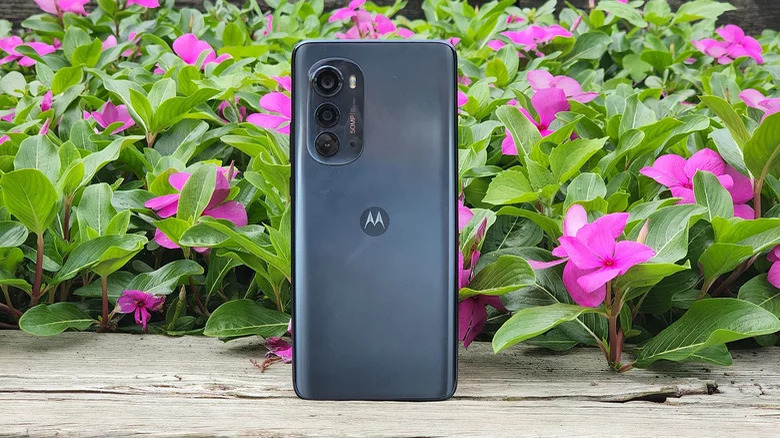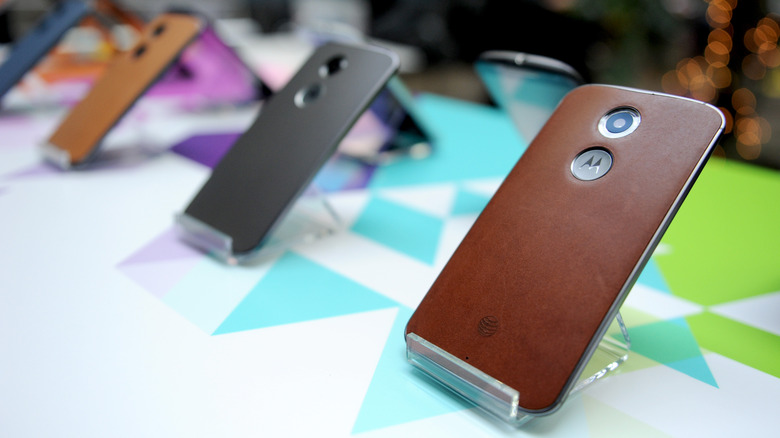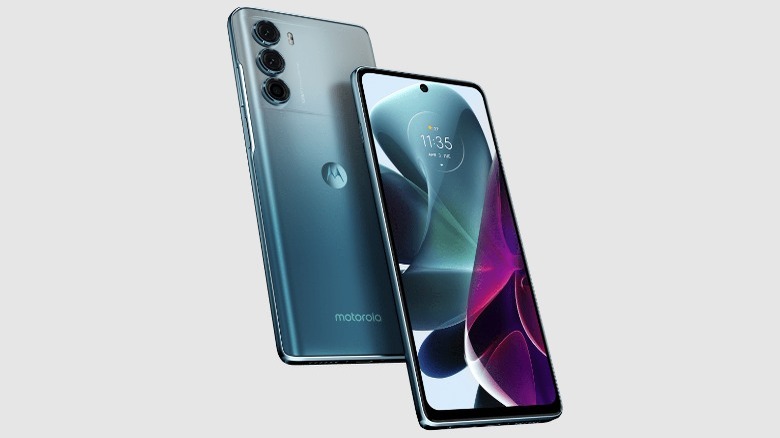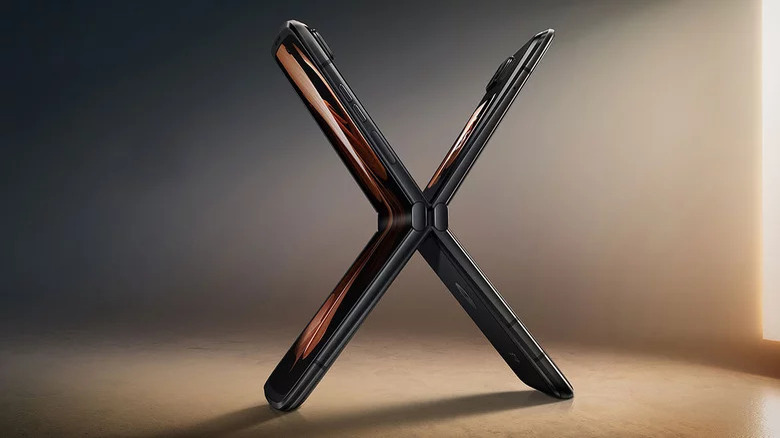8 Best Motorola Phones Ever Made, Starting With The Original Moto G
Motorola was arguably the single most influential brand throughout the early years of cell phones, with its most iconic models cementing their place in pop culture as well as shaping the future of the industry. The flip phone briefly became the must-have accessory for everyone from businesspeople to celebrities, before the rise of the smartphone saw Motorola switch to making value-oriented devices that helped establish the blueprint for the emerging mid-range smartphone segment.
After a few years of mixed fortunes at the hands of various owners, the Motorola brand has returned to form in recent years. Its smartphones often punch above their weight, in some cases serving as compelling alternatives to phones that cost double the price. These eight represent the very best of what the brand has had to offer, from its early years as a technological tastemaker through its second incarnation as one of the best value smartphone makers on the market.
Moto G
Motorola's biggest strength as a smartphone manufacturer arguably doesn't lie in making the most capable handsets on the market, but rather in the amount of capability it can cram into reasonably-priced devices. The first-generation Moto G was a prime example of this — it proved to be a capable, durable smartphone, with a price tag that undercut most of its key rivals. We were impressed with its performance for the price, with its Qualcomm Snapdragon 400 quad-core processor beating flagship phones from just two years prior in our benchmarking tests.
It boasted an impressive battery life too, with over two days of usage available from a single charge. Its biggest selling point, though, was that it was available off-contract for $179 in 8GB form or $199 in 16GB form. Its performance, build quality, and impressive affordability proved that Motorola was a force to be reckoned with in the budget-oriented Android market, with the G family in particular remaining a highlight of the brand's range over the years.
Motorola Razr V3
The Razr V3 kickstarted the flip phone trend, although it nearly never got made. It emerged as a skunkworks project with an initial projected sales volume of 800,000 units, but it went on to sell more than 100 million units. It was unlike anything a cell phone maker had produced before — sleek, futuristic, and most importantly, razor-thin for its era. By targeting celebrities as early adopters, Motorola managed to make the Razr the must-have gadget of the time, although the launch of the iPhone in 2007 saw its reign cut short.
Its unique design meant some compromises had to be made to accommodate its hardware, with the thick "chin" at the bottom of the phone housing the antenna to allow the flip screen to be as thin as possible. Its aluminum construction also made it feel more high-end than other phones of the era, with the backlit keyboard giving it a more futuristic feel than anything that had come before it. In some ways, the Razr became the defining image of Motorola for a generation of cell phone buyers, leaving a lasting impression that persisted even after the company made the transition to smartphones.
[Featured image by Dante Alighieri via Wikimedia Commons | Cropped and scaled | CC BY-SA 3.0]
Moto Z2 Play
It might not have been the biggest sales hit, but the Moto Z2 Play made full use of Motorola's innovative Moto Mods system, and it unexpectedly won us over. In particular, we found that the JBL SoundBoost 2 was a very welcome addition, turning the phone into a compact portable speaker. The idea of Moto Mods was to develop a range of officially-supported accessories to enhance the capabilities of Motorola's smartphones. It was a similar idea to the "modular" smartphone, except the Mods were connected through magnets mounted on the back of the phone.
The Z2 Play was one of the best Motorola smartphones to take advantage of this system since its mid-tier setup was ripe for enhancement. Even without Mods, however, we thought the Z2 Play compared very well with the OnePlus 5, another emerging challenger at the time. It even slightly undercut the OnePlus on price, leaving buyers with more cash left over to indulge in some Mods.
Motorola StarTAC
The StarTAC was the first ever flip phone, launching in 1996 and helping to popularize cell phone usage across America. It retailed for $1,000 at launch, but it was unlike anything that had come before it — compact, light, and easily portable. Motorola claimed it could be "worn fashionably as an accessory," and it came with a cutting-edge vibration feature that let users take calls without the need for an audible ringtone.
The phone's screen measured just 1.75 inches, while the antenna extended from the back and could be hidden away when not in use. Weighing just 3.1 ounces, it was lighter than any other phone of its kind, meaning it could be attached to belts, placed in a handbag, or kept in your pocket — a revolution at the time. The success of the StarTAC helped to set the blueprint that other cell phone manufacturers followed — that is, until Motorola's own Razr flip phone came along and changed the industry all over again.
Moto Edge (2022)
Our review of the Moto Edge (2022) summed up its appeal: It was king of the midrange, a segment where Motorola has firmly established itself as one of the players to beat. We thought it edged out its main rival, the Google Pixel 6A, in terms of software, plus its 144Hz OLED screen and wireless charging were very impressive for the price. It also continued Motorola's tradition of innovation by including Ready For, a feature that lets you turn your smartphone into a laptop by connecting a monitor and keyboard.
With up to 128GB of RAM and 256GB ROM available, the Edge (2022) didn't quite match up to the flagship phones of the year, but then it didn't come close on price either. Retailing for $499, the Edge (2022) sat at the upper end of the midrange market, a sort of "premium midrange" for those who wanted a powerful phone but couldn't quite justify splashing out on a flagship. In that (admittedly slightly niche) segment, it was the phone to beat in 2022.
Moto X (2014)
After an uninspiring start with the original Moto X, we thought the 2014 version of Motorola's flagship managed to strike just the right balance between hardware, design, and attractive pricing. It addressed many of the criticisms levied at its predecessor, with a more premium metal construction and vastly improved 1080p 5.2-inch AMOLED display. Its software was closer to vanilla Android than many of its competitors, but we appreciated the bloat-free approach.
It also packed plenty of new and improved features including Moto Display and Moto Voice, the latter of which was a modified version of Google's Assistant which allowed users to do everything from post on Facebook to find a YouTube video to watch, all without having to touch their phone at all. Despite several previous attempts, the Moto X (2014) was the phone that proved Motorola could in fact make a capable, desirable flagship phone that could compete with the biggest names in the market, and even outshine them in some aspects. We noted that the phone was, at the time, the most customizable handset on the market, and it was arguably the best-feeling Android in hand too.
Moto G200 5G
Unveiled in late 2021, the Moto G200 5G delivered exactly what you'd expect from a Motorola phone: plenty of power, an attractive design, and a temptingly affordable price tag. It was targeted at Pixel 6 buyers and offered better value than its Google-branded rival in some respects. It packed a Qualcomm Snapdragon 888+ processor, a 144Hz 6.8-inch screen, and a 108MP main camera — all features that wouldn't look out of place on the latest flagships on the market at the time.
To keep prices reasonable, Motorola only offered one memory configuration of 8GB RAM and 128GB ROM. Its 16MP front-facing camera was also a little less capable than many of its rivals, but then, it more than made up for that with its rear triple-camera setup. It was also one of the fastest-charging flagships, with its 5,000 mAh battery supporting up to 33W. Unfortunately for American buyers, it never saw a launch in the U.S., as Motorola's recent strategy has been to focus on Chinese and European markets for its higher-end phones.
Moto Razr (2022)
The 2019 Razr foldable smartphone brought back one of Motorola's most famous names, but it suffered from its fair share of teething problems in its first generation. In particular, it was outclassed by the Samsung Galaxy Z Flip, which launched just a few months after. However, the 2022 Razr is an altogether more competitive smartphone, packing a flagship Snapdragon processor and a sharp OLED screen. It packs the specs we wanted from the first-gen phone, but unfortunately, there's been no sign of a U.S. release so far.
Much like the Moto G200 5G, Motorola has focused on launching the latest-gen Razr in China and Europe, with a representative confirming via a forum post that there are no current plans for an American launch. This is a huge shame, as it means U.S. consumers are missing out on one of the best Motorola phones in recent years. The Razr (2022) takes the iconic design of the original Razr V3 and updates it for the modern smartphone user, albeit without the "chin" of the latest generation. It's also one of the most powerful phones on the market thanks to that Snapdragon processor, and the crease in the screen is barely noticeable. It's cheaper than the Galaxy Z Flip in the markets where it has already launched, retailing for £949 (around $1,195) in the U.K..
